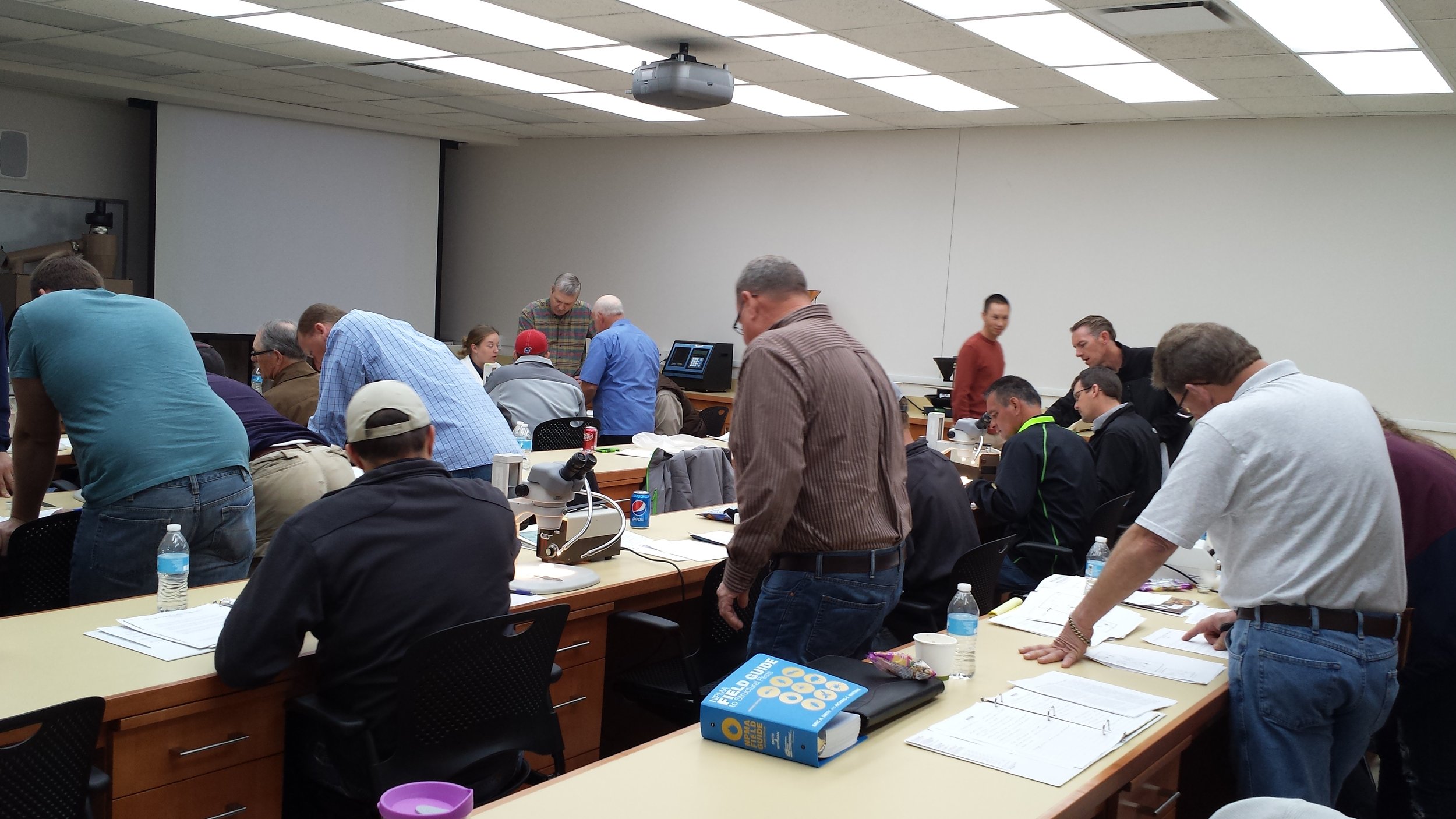4 Simple Techniques For Pestwise
4 Simple Techniques For Pestwise
Blog Article
The Single Strategy To Use For Pestwise
Table of ContentsExcitement About PestwiseThe smart Trick of Pestwise That Nobody is Talking About3 Simple Techniques For PestwiseThe Ultimate Guide To PestwiseLittle Known Questions About Pestwise.All about PestwiseThe Main Principles Of Pestwise

Q. Specify "incorporated bug management" (IPM) and checklist a number of possible control techniques that may be made use of in an IPM method. A. Integrated pest management is the incorporating of ideal insect control tactics into a solitary plan to reduce bugs and their damages to an acceptable level. Bug control tactics may consist of: host resistance, biological control, social control, mechanical control, sanitation, and chemical (chemical) control.
Indicators on Pestwise You Need To Know
What can you do to keep the insects you are attempting to regulate from becoming resistant to the chemicals you use? A. Bug resistance can be lowered by using incorporated bug monitoring and turning the sorts of chemicals made use of.
Pests are a critical risk to the farming service, and incorporated parasite management helps cultivators address and alleviate these threats. Integrated insect administration makes use of several methods in complicated, hence being a more reliable solution to the problem. Termite Control. Particularly, eliminating hostile chemical approaches permits decreasing injury to individuals and the atmosphere by utilizing natural and safer options instead
Getting The Pestwise To Work
The goal of incorporated bug management is to minimize this injury and control acceptable infestation degrees as opposed to get rid of all undesirable populations. This is why it is necessary to recognize what actions are warranted in each situation and use hostile ones only when various other integrated administration techniques do not function. Integrated administration mitigates the adverse consequences of a non-IPM strategy, and the primary advantages of IPM Advantages of IPM.
A proper understanding of the invasion extent establishes if the issue needs to be dealt with. are the following components of an IPM program since it is important to recognize if the microorganisms make potential threats and decide on the incorporated monitoring options or the certain chemical use. mean to lower invasions by using different agronomic methods.
The Definitive Guide to Pestwise
if prevention was ineffective. Integrated administration options in an IPM program beginning with safer to more hostile ones. For example, target or broadcast chemical spraying may follow manual removal or capturing that hasn't aided. Those incorporated monitoring facets help comprehend exactly how to prepare and execute an IPM program step by step: Monitor your plants on a regular basis.

Among others, IPM cultural techniques consist of the following field administration methods: soil treatment; selection of appropriate plants; crop rotation; interplanting or strip cropping; choice of planting days; weed control; use additional info catch plants. Positive dirt conditions accelerate plant growth, and vigorous crops are much more resistant to infestations. Exterminator. In integrated insect management, soil screening aids comprehend if the field appropriates for the production of this or that plant, and after that apply the lacking nutrients to make certain plant healthy and balanced development
Getting My Pestwise To Work
No-till practices help protect against dirt erosion, adding to sustainable farming. When tilling is needed, it is recommended to conduct it in the loss to reveal them to all-natural enemies and serious weather. Healthy seed startings and seeds predetermine effective crop advancement, so it is very important to select pest-free planting material with solid roots.
, which is likewise utilized in the incorporated bug monitoring system. Alternatively, infestations increase when plants of the same crop type or family grow together.
Similarly, potato beetles can harm expanding potatoes, in addition to tomatoes. Growing catch plants in spots is one more choice for IPM intercropping. This integrated insect management method recommends bring in bugs to certain plants and after that managing them with chemical or mechanical techniques. In particular, you can expand soybeans as catch crops for Japanese beetles.
The 2-Minute Rule for Pestwise
Barriers are typical instances of physical IPM techniques. Let's take a closer look at them. Removing or selecting bugs out manually is a time and labor-consuming choice that is widely used in integrated monitoring and natural farming. Fully grown bugs or their eggs and larvae are accumulated by hand and ruined.

Department of Plant Sciences. University of Missouri. Soil solarization is a reliable integrated administration strategy to sanitize the area by warming it in a natural method. This incorporated management technique indicates a common means of destroying bugs by killers, parasitoids, pathogens, and various other organic control agents (also known as hostile organisms). The function of organic control in IPM is to.
Rumored Buzz on Pestwise
With time, their populace became a real annoyance to farmers together with aboriginal kangaroos or dingoes. The walking stick toad is an additional instance highlighting incorporated organic control failure hereof when it declined to search the target varieties and came to be a parasite itself. Parasitoids create on or within their hosts to eventually kill them after growing.
Report this page